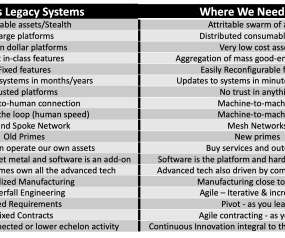Why The Government is Isn’t a Bigger Version of a Startup
Steve Blank
NOVEMBER 12, 2019
Rather than focus the university inward on research, Terman took the radical step of encouraging Stanford professors and graduate students to start companies applying engineering to pressing military problems. Russia, Iran, and North Korea have also fused those activities. America’s adversaries understand this.











Let's personalize your content